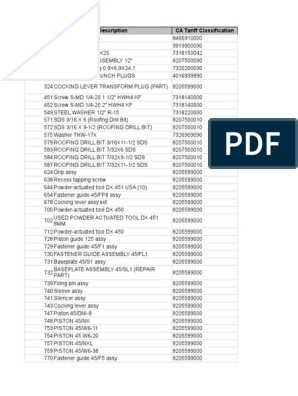Juvenile Rheumatoid Arthritis
Dorothy W. Wortmann, MD
Clinical Associate Professor OU Department of Pediatrics
�Objectives
recognize the characteristic symptoms and
signs of the three clinical subgroups of JRA (JIA) understand which laboratory and radiology studies are helpful when considering the diagnosis be familiar with the differential diagnosis including infections, malignancies, and noninflammatory conditions understand the general approaches to treatment
�JUVENILE RHEUMATOID ARTHRITIS
most frequent connective tissue disease of
childhood one of the more common chronic illnesses of childhood and an important cause of disability currently defined in the U.S. by criteria established by ACR
�JUVENILE RHEUMATOID ARTHRITIS
American College of Rheumatology Revised Criteria
age of onset < 16 years arthritis of one or more joints
duration of disease > 6 weeks
other conditions which present with
arthritis in childhood must be excluded
�JUVENILE RHEUMATOID ARTHRITIS
Epidemiology
described in all races and geographic
areas incidence: 6 19.6 cases/100,000 children prevalence: 16-150/100,000 females predominate 2:1
��JUVENILE RHEUMATOID ARTHRITIS
Etiology and Pathogenesis
unknown combination of factors
environment (infection, trauma, stress) autoimmunity immunogenetic
�JUVENILE RHEUMATOID ARTHRITIS
Onset Types
pauciarticular (< 4 joints) polyarticular (> 5 joints) systemic (arthritis with fever and rash)
�ILAR Proposed Classification Criteria
Juvenile Idiopathic Arthritis (JIA)
systemic polyarticular RF+ polyarticular RFoligoarticular
persistent extended
psoriatic arthritis enthesitis-related arthritis other arthritis
�JUVENILE RHEUMATOID ARTHRITIS Clinical features: pauciarticular disease
40-60% of patients with JRA insidious onset morning irritability/stiffness subtle systemic symptoms: usually absent large joints (rarely hip), asymmetric
involvement uveitis 20% subtypes
��JUVENILE RHEUMATOID ARTHRITIS
Laboratory Studies: Pauciarticular Disease
CBC: normal
ESR: usually normal ANA: frequently positive RF: usually negative synovial fluid: class II (inflammatory) x-ray findings: soft tissue swelling,
periarticular osteoporosis, growth disturbance, loss of joint space
�����JUVENILE RHEUMATOID ARTHRITIS Clinical features: polyarticular disease
30-40% of patients with JRA
morning irritability/stiffness more
prominent systemic symptoms: mild to moderate large and small joints including cervical spine, symmetric involvement uveitis 5% subtypes
���JUVENILE RHEUMATOID ARTHRITIS
Laboratory features: polyarticular disease
WBC , Hgb , platelets WNL to
ESR to ANA may be positive RF may be positive Synovial fluid: class II (inflammatory) X-ray findings: soft tissue swelling,
periarticular osteoporosis, joint space narrowing, erosions
��JUVENILE RHEUMATOID ARTHRITIS Clinical features: systemic disease
10-20% of patients with JRA
prominent systemic symptoms: fever,
rash, lymphadenopathy, hepatosplenomegaly, pericarditis, pleuritis arthritis may be absent for months to years uveitis uncommon
����JUVENILE RHEUMATOID ARTHRITIS Laboratory studies: systemic disease
WBC , Hgb , platelets to , ESR to
ANA and RF usually negative
x-rays : soft tissue swelling
�JUVENILE RHEUMATOID ARTHRITIS Extra-articular Manifestations
generalized or local growth disturbances
delayed puberty pericarditis, myocarditis, rarely
endocarditis plural effusion, rarely pneumonitis, pulmonary fibrosis hepatitis hematuria
�����JUVENILE RHEUMATOID ARTHRITIS
Differential Diagnosis
�JUVENILE RHEUMATOID ARTHRITIS
Treatment
supportive not curative
involves multidisciplinary team approach goals:
to suppress articular and/or systemic inflammation with as little risk as possible to maintain function/prevent disabilities to foster normal psychological and social development
heterogenity of disease mandates
individualization
�Medications in the Treatment of JRA
NSAID intra-articular steroids sulfasalazine hydroxychloroquine (auranofin) methotrexate (IM gold) (D-penicillamine) etanercept azathioprine cyclophosphamide cyclosporin
�JUVENILE RHEUMATOID ARTHRITIS
Treatment: physical measures
heat:
splinting:
exercise:
analgesia muscle relaxation provide joint rest maintain functional position correct deformities passive, active assisted and active range of motion general conditioning
rest
�JUVENILE RHEUMATOID ARTHRITIS
Treatment: education and supportive counseling
understand disease process, treatment
and prognosis understand roles in care as normal possible:
discipline/family life school peer relationships
counseling
�JUVENILE RHEUMATOID ARTHRITIS
Prognosis
chronic disease which cannot be cured characterized by flares and remissions after 10 years or more:
31%-55% persistent active disease 31% (9% - 48%) Steinbrocker Class III and IV
�JUVENILE RHEUMATOID ARTHRITIS
Poor Prognostic Signs
pauciarticular long duration of active disease conversion to polyarticular disease (30%) chronic uveitis polyarticular long duration of active disease articular erosions RF positivity/rheumatoid nodules systemic conversion to polyarticular disease (25-50%)

























































































